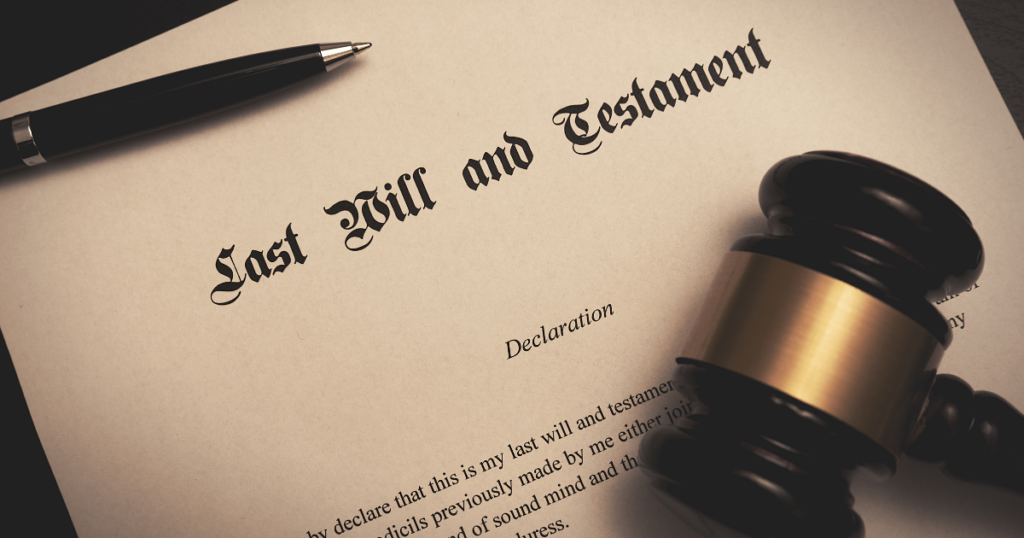Unlock the secrets to securing your family’s future with our detailed action plan on ‘How to Write a Will: A Comprehensive Guide for Indians.’ In this enlightening blog, we unveil the five vital steps that will empower you to craft a foolproof Will, ensuring your legacy is preserved according to your wishes. Join us as we navigate through the intricacies of Will’s writing, providing a step-by-step roadmap tailored for Indians.
Take advantage of this essential guide to safeguarding your wealth and ensuring a seamless transfer of assets. Subscribe now and embark on the journey to financial peace of mind!

Discover the essential steps to craft a robust Will with our detailed action plan designed for Indians. In this illuminating blog, we guide you through ‘How to Write a Will,’ unravelling the intricacies of estate planning.
Learn the five vital steps that empower you to safeguard your family’s financial future and ensure a seamless transfer of assets. From asset identification to appointing executors and listing beneficiaries, this comprehensive guide unveils the critical elements for creating a watertight Will. Do not miss out on securing your legacy—watch now and embark on the journey to financial peace of mind!

Crafting a Will in India is a crucial step towards securing the financial future of your loved ones and ensuring the seamless transfer of assets according to your wishes. Here are five key considerations to bear in mind when preparing your Will:
1. Detailed Declarations:
Initiate the Will by providing comprehensive personal details, including your full name, age, residential address, and your parents’ names. Avoid using abbreviations to confirm that you are of sound mind and not under any undue influence. This declaration establishes that you are in complete control while outlining the specifics of your Will.
Example: “I, [Your Full Name], aged [Your Age], residing at [Your Residential Address], and born to [Parents’ Full Names], hereby declare that I am of sound mind and drafting this Will willingly and without any external influence.”
2. Thorough Asset Identification:
Conduct a thorough assessment of all your assets, both financial and physical. Create a detailed list encompassing bank accounts, lockers, insurance policies, investments in shares, mutual funds or bonds, and retirement funds such as PPF and EPF. Provide full details of each asset so you can understand your possessions clearly.
Example: “I hereby list and identify all my assets, including but not limited to bank accounts, lockers, insurance policies, and investments, as detailed in the attached document.”
3. Appointment of Executors:

Since a Will comes into effect posthumously, designate an executor responsible for executing your instructions. Clearly state the executor’s full details, including name, address, and your relationship with them. Consider appointing a substitute executor to ensure the smooth execution of your Will if the primary executor is unable or unwilling to fulfil the responsibilities.
Example: “I appoint [Executor’s Full Name], residing at [Executor’s Address], as the executor of this Will. In case [Executor’s Name] is unable or unwilling to execute my instructions, I appoint [Substitute Executor’s Full Name] as the substitute executor.”
4. Detailed Beneficiary Information:
List the full names, addresses, and dates of birth of your chosen beneficiaries. Avoid using nicknames to prevent any confusion. Clearly specify the proportion in which you wish to distribute your assets among the beneficiaries, ensuring clarity and preventing misinterpretations.
Example: “I designate the following individuals as beneficiaries: [Beneficiary 1’s Full Name], residing at [Beneficiary 1’s Address], born on [Date of Birth]; [Beneficiary 2’s Full Name], residing at [Beneficiary 2’s Address], born on [Date of Birth], and so forth.”
5. Witness Confirmation:
Ensure your Will is appropriately signed, dated, and witnessed by at least two individuals who are not beneficiaries. These witnesses need not be aware of the Will’s content but must be present during the signing to validate its authenticity. Sign and date each page, with particular attention to the last page, which should include the witnesses’ signatures, names, and addresses.
Example: “I declare that this Will has been signed and executed by me in the presence of the undersigned witnesses, who have attested to the same by signing below.”
Remember, drafting a Will is not a one-time task; periodic reviews and updates are essential to reflect changes in your assets. Discard or destroy earlier versions to prevent confusion, and consider seeking professional assistance for a meticulous Will.
In conclusion, as legal expert Shetty emphasizes, “Writing a Will is instrumental in securing the financial future of loved ones and expediting the legal process of asset transfer, making it vital for individuals looking to preserve and transfer their wealth according to their wishes.”
Here is an action plan to guide you through the process of creating and maintaining your Will:
1. Initial Assessment:
• Task: Conduct a detailed inventory of your assets, including financial accounts, properties, investments, and valuable possessions.
◦Action Steps:
Create a spreadsheet or document to record all assets.
Regularly update this document to reflect any changes or acquisitions.
2. Legal Consultation:
• Task: Seek professional advice to ensure your Will complies with legal requirements and is robust against potential disputes.
Action Steps:
Consult with a qualified legal expert or estate planner.
Discuss any specific legal considerations or nuances that may apply to your situation.
3. Beneficiary Discussion:
• Task: Communicate with potential beneficiaries to understand their preferences and ensure clarity in your Will.
Action Steps:
Discuss openly and honestly with family members or individuals in your Will.
Address any concerns or questions they may have regarding their role as beneficiaries.
4. Executor Confirmation:
• Task: Confirm the willingness and suitability of your chosen executor(s).
Action Steps:
Approach the individuals you wish to appoint as executors and substitutes.
Discuss the responsibilities and confirm their acceptance of the role.
5. Drafting the Will:
• Task: Draft the Will, ensuring clarity and specificity in your instructions.
Action Steps:
Use the information gathered in the asset assessment and discussions with beneficiaries.
Include all necessary details, such as declarations, asset distribution, executor information, and beneficiary details.
6. Legal Review:

• Task: Have your draft legally reviewed for accuracy and completeness.
Action Steps:
Submit the draft to your legal advisor for a thorough review.
Address any suggested changes or legal considerations.
7. Signing and Witnessing:
• Task: Properly sign and witness the Will in accordance with legal requirements.
Action Steps:
◦ Schedule a signing ceremony with witnesses who are not beneficiaries.
◦ Ensure all signatures, dates, and witness information are accurately recorded.
8. Safe Storage:
• Task: Safely store the executed Will and communicate its location to the executor(s).
Action Steps:
Consider storing the Will in a secure location, such as a bank safe deposit box.
Provide the executor(s) with clear instructions on how to access the Will when needed.
9. Periodic Review:
• Task: Regularly review and update the Will to reflect changes in assets or life circumstances.
Action Steps:
Set a schedule for reviewing your Will, especially after significant life events.
Make updates promptly to ensure the document remains current.
10. Communication:
• Task: Communicate the existence and location of the Will to trusted individuals.
Action Steps:
Inform close family members, executors, and legal representatives about the existence and storage location of the Will.
Provide clear instructions on how to access the Will in case of your demise.
By following this action plan, you can systematically approach the creation and maintenance of your Will, ensuring that your wishes are accurately documented and easily executable when needed.
As we conclude this insightful journey on ‘How to Write a Will: A Detailed Action Plan for Indians – Unveiling the 5 Vital Steps,’ remember that crafting a will is not just about documenting assets but about securing the future for your loved ones. By following these comprehensive steps, you have taken a significant stride towards ensuring financial peace of mind and safeguarding your legacy.
Wishing you and your beneficiary family, a happy and successful life ahead

Below is a brief list of questions you should prepare while preparing your WILL.
Will & Estate Planning Questionnaire
Personal Information:
Full Name:
Date of Birth:
Contact Number:
Email Address:
Residential Address:
Marital Status:
Married
Divorced
Single
Other (please specify):
If Married, please provide the spouse details:
Spouse’s Full Name, Date of Birth, Contact Number
Family and Heirs:
List all immediate family members and heirs:
Name
Relationship
Age
Asset Inventory:
List all your assets, including but not limited to:
Real Estate
Bank Accounts
Investments
Business Ownership
Vehicles
Personal Belongings and Heirlooms
List all your assets, including but not limited to:
Real Estate
Bank Accounts
Investments
Business Ownership
Vehicles
Personal Belongings and Heirlooms
Distribution Preferences:
How would you like your assets to be distributed among your heirs?
Equally, among all heirs
Unequally with specific preferences
Other (please specify):
If Unequally, provide details:
Asset Distribution Plan:
Do you have specific goals for your Will or estate plan?
Provide for Special Needs Dependents
Cover Grandchild’s Education Costs
Support Charitable Organizations
Other (please specify):
If Other, provide details:
Estate Planning Goals:
Guardianship and Executorship:
If you have minor children, who should be named as their guardian?
Spouse
Family Member
Close Friend
- Other (please specify):
- If Other, provide details:
- Guardian Nomination:
Who should serve as the executor of your Will or any trusts?
- Spouse
- Family Member
- Close Friend
- Legal Professional
- Other (please specify):
If Other, provide details:
Executor Nomination:
Additional Information:
Do you have any specific concerns or considerations you would like to address in your estate plan?
The author of this article is Taresh Bhatia, a Financial Freedom Specialist, qualified as a CERTIFIED FINANCIAL PLANNER PRO who has authored an Amazon best seller-“The Richness Principles”. He can be reached at taresh@tareshbhatia.com
©️2024: All Rights Reserved. Taresh Bhatia
Subscribe Now for Upcoming Blogs!
📢 Join free live webinar —
Couple Finance Formula™ Register here




